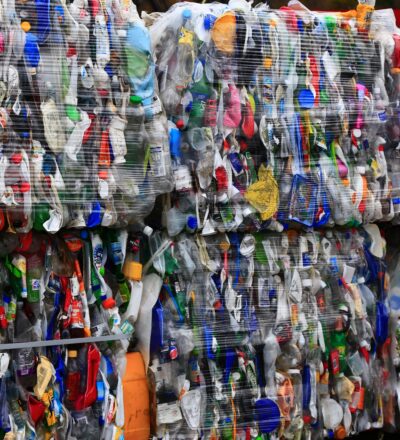Plastic is far too valuable to be treated as waste. It can serve as the feedstock for circularity. This calls for concerted action, in particular to tackle plastic waste and ensure its recycling. VNCI interviewed Ronald Korstanje and Sascha Kersten on what is needed for plastics to become truly circular. In 2 articles, they explain the latest developments in the world of circular plastics. Let’s dive into it!
Ronald Korstanje and Sascha Kersten are involved in the Circular Plastics Initiative (CPI) and are working on boosting circularity in plastics on an industrial scale. So, what do they think is needed for the road to circular plastics?
Why do we still burn plastics?
To achieve the goal of 50% CO2 reduction per kilogram of plastic by 2030, incineration of waste plastic will have to be minimized. Today, at least 1/3 of all plastic still ends up in the furnace to be burned. The share of total plastics being fully recycled is only 9%.
Ronald Korstanje, program manager for Circular Plastics Initiative (CPI) at the Dutch Polymer Institute (DPI) tells VNCI: “The emphasis for circular plastics should not only focus on more recycling but especially on higher quality. Therefore, the goal of the Circular Plastics Initiative is to reuse plastics in their original application. A total of 540 million is available for research in the coming years. Hundreds of researchers will get to work with the goal of making high-quality recyclate.”
Chemical recycling makes new virgin plastic
Today, there are 2 methods for recycling plastics:
- In mechanical recycling (sorting, washing, and shredding) the polymer is retained and regranulated, with optional removal of colourants, fillers, plasticizers and other additives
- In chemical recycling, the polymer is broken down into its monomers (or beyond) and resynthesized in a chemical ‘bottom-up’ fashion
The most common method for the recycling of plastic waste is mechanical recycling. This method has been used for many decades, says Sascha Kersten, scientific director of the CPI. “But 75% of household waste plastic can not be reused in this way.”
A new way for recycling is through pyrolysis. This is a form of chemical recycling, in which the waste can be converted into an oil that can serve as the starting material for new virgin plastic. Mechanical recycling is more environmentally friendly, Kersten also says, “But you can only apply that a few times; the quality suffers. So you also always need chemical recycling too in a circular economy.”
The Circular Plastics Initiative
At ISPT, we believe that circularity is the cornerstone of a sustainable future. This means that resources should be kept in use for as long as possible while maximum value is obtained from their usage. Plastics offers many advantages to other materials, for many purposes. Plastics often combine high performance with reduced weight, flexibility and low carbon footprint.
It is therefore important to develop a strategy for their responsible use. Circularity lays at the heart of our Circular Plastics Initiative.
More on Ronald Korstanje
Ronald Korstanje is Program Director of the Circular Plastics Initiative. Ronald Korstanje has more than 10 years of experience in research-driven programs in the field of polymers and plastics. Polymer and plastic functionality and manufacturability are his main topics.

Both articles originates from VNCI magazine.
We are open for more participants at the CPI. Would you like to join the program or need more information, please contact Program Manager Klaartje Rietkerken.
Acknowledgement
This project is co-funded with subsidy from the Topsector Energy by the Ministry of Economic Affairs and Climate Policy.
